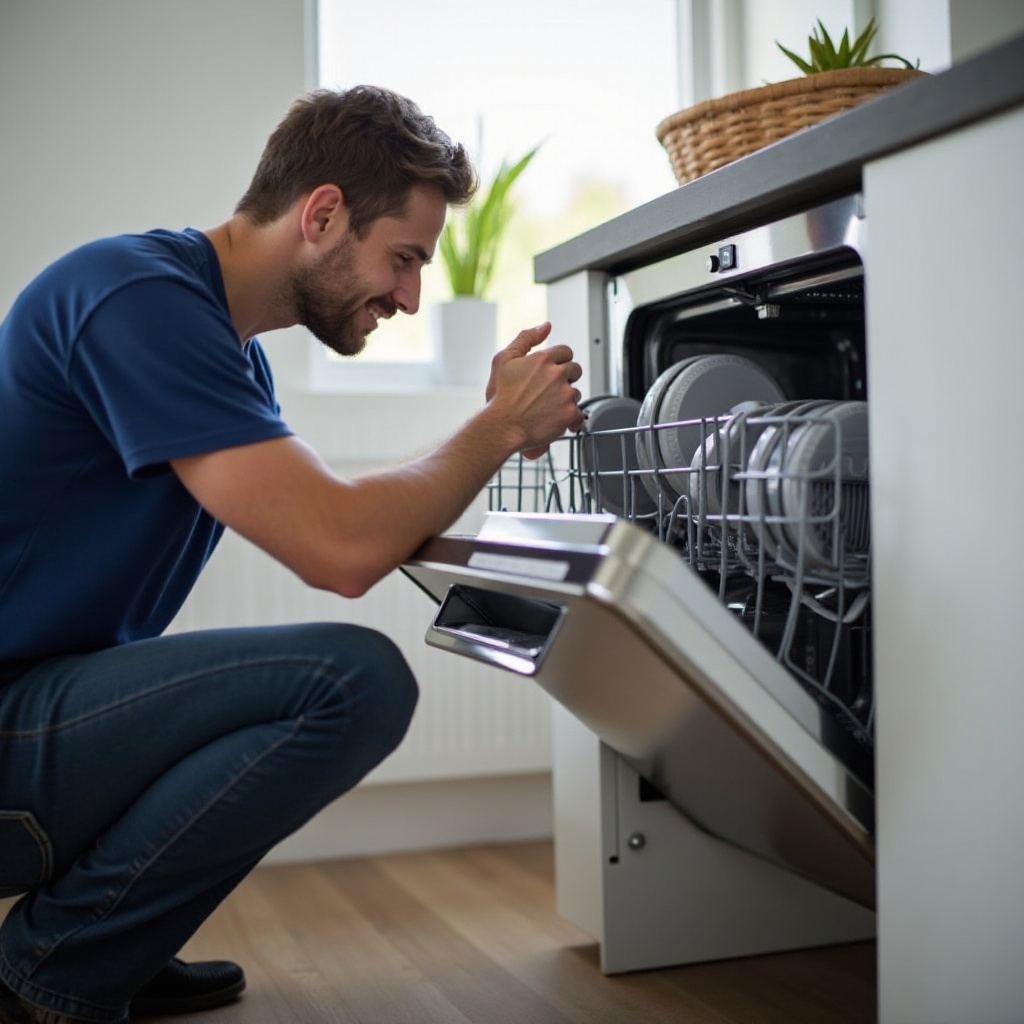Introduction
Installing a new dishwasher can seem daunting, but with the right tools and a little know-how, it can be a straightforward task. This guide will walk you through the entire process, ensuring your new appliance is installed correctly and efficiently. Whether you're replacing an old machine or setting up a new one, following these steps will help you achieve a hassle-free installation.

Tools and Materials Needed
Before you begin, gather all the necessary tools and materials. This preparation will make the installation process smoother and more efficient. You will need:
- Adjustable wrench
- Screwdriver set
- Pliers
- Level
- Electrical tape
- Teflon tape
- Bucket and towels
- Measuring tape
- New dishwasher installation kit (if not included)
With your tools and materials in hand, you're ready to start.
Preparing for Installation
Proper preparation is key to a successful installation. This section covers how to measure your space, remove the old dishwasher, and check for proper water and power connections.
Measuring the Space
Accurate measurements ensure that your new dishwasher fits perfectly. Measure the height, width, and depth of the existing space. Compare these measurements to the dimensions of your new dishwasher to confirm compatibility.
Removing the Old Dishwasher
Begin by shutting off the water supply and the power to your old dishwasher. Disconnect the water supply line by using an adjustable wrench. Use a screwdriver to remove screws securing the dishwasher to the counter. Carefully slide the old dishwasher out, being mindful of the electrical and drainage connections. Place a bucket underneath to catch any water leakage while disconnecting the drain hose.
Checking Water and Power Connections
Inspect the water supply line and shut-off valve to make sure they are in good working condition. Check the electrical wiring for any frays or damage. Ensuring these connections are in top condition will prevent issues later on.
Installing the New Dishwasher
With the old dishwasher removed and your space prepared, you can now focus on installing the new one. This involves positioning the appliance, connecting the water supply, and setting up the electrical wiring.
Positioning and Leveling the Dishwasher
Carefully slide the new dishwasher into place. Use a level to ensure it sits evenly. Adjust the feet of the dishwasher as needed to maintain an even position. This step is crucial for the appliance to function correctly and prevent leaks.
Connecting the Water Supply
Attach the water supply line to the inlet valve on your new dishwasher. Use Teflon tape around the threads to ensure a tight seal. Tighten the connection with an adjustable wrench, but be careful not to over-tighten as this can damage the fittings.
Setting Up Electrical Wiring
Connect the electrical wires according to the manufacturer's instructions. Use wire nuts to secure the connections and wrap them with electrical tape for added safety. Ensure that all connections are tight and properly insulated to prevent electrical hazards.

Testing and Final Adjustments
Once everything is connected, it's time to test your dishwasher to ensure everything is functioning correctly. This includes running an initial test cycle and checking for leaks and proper drainage.
Running an Initial Test Cycle
Turn on the water supply and restore power to the dishwasher. Run a short wash cycle to check for any leaks at the water supply and drain connections. This test will help identify any issues before you use the dishwasher regularly.
Ensuring Proper Drainage and Leak Checks
While the test cycle runs, monitor the dishwasher for any signs of leaking water. Check underneath for any drips or moisture and tighten connections if necessary. Also, observe the drainage to ensure the dirty water is being expelled properly and not backing up.

Troubleshooting Common Issues
Even with careful installation, you may encounter some common issues. Here's how to address them effectively.
Dishwasher Doesn't Start
If the dishwasher doesn't start, check the electrical connections and ensure the power supply is functional. Verify that the door latch is closing properly, as some models won't start unless the door is securely shut.
Fixing Leaks
For leaks, revisit the water supply and drain connections. Ensure they are tight and correctly sealed with Teflon tape if needed. Check for any cracks or damage in the hoses.
Drainage Problems
If the dishwasher isn't draining correctly, check the drain hose for blockages. Ensure the hose is not kinked and has a proper loop to prevent backflow. Clean any filters or screens that may be clogged.
Conclusion
Installing a new dishwasher doesn't have to be a daunting task. By following this comprehensive guide, you can ensure a successful installation, saving time and avoiding unnecessary hassles. Proper preparation, accurate connections, and thorough testing are key to a smooth process.
Frequently Asked Questions
How long does it typically take to install a new dishwasher?
The entire installation process typically takes about 1-3 hours, depending on your experience and whether any modifications are needed.
Can I install a dishwasher myself, or should I hire a professional?
While many people can install a dishwasher themselves by following detailed instructions, hiring a professional is advisable if you are unsure or uncomfortable with the process.
What tools are essential for a DIY dishwasher installation?
You will need an adjustable wrench, screwdrivers, pliers, level, electrical tape, Teflon tape, bucket, towels, measuring tape, and a dishwasher installation kit.
